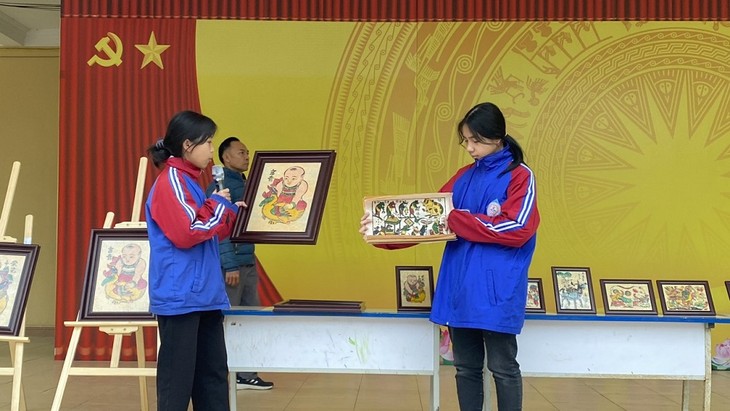(VOVWORLD) - With great creativity, teacher Dinh Cong Tuyen of Song Khoai secondary school in Quang Yen town, Quang Ninh province, has created many unique paintings from scallop shells. The paintings send a message of environmental protection.
 Teacher Dinh Cong Tuyen and his paintings made from scallop shells. (Photo: VOV) Teacher Dinh Cong Tuyen and his paintings made from scallop shells. (Photo: VOV) |
Hiep Hoa commune, Quang Yen town, is known for exploiting scallops in the tidal area with an output of thousands of tons per year. After the flesh is taken, the scallop shells are dumped into the environment, causing pollution. Facing that problem, teacher Dinh Cong Tuyen came up with the idea of turning scallop shells into works of art.
“First, I did a lot of research. In 2014, I started working on this idea, then continued experimenting and learning from experience. Scallop shells have a pearl-like sheen. I use layers of scallop shells to create an effect of color and light,” said Tuyen.
Dinh Cong Tuyen tries to inspire and transmit his passion for art to his students. With the idea of creating Dong Ho folk paintings on paper made from poonah tree wood and powdered seashells, students of Song Khoai secondary school have created many impressive works of art under the instruction of Tuyen.
“At my school’s art club, I’ve learned a lot about art, especially Dong Ho folk paintings. It has enriched my appreciation of history and culture. Using a special kind of paper made with seashell powder, we unleash our creativity,” Bui Thanh Hien, a member of the art club at Song Khoai secondary school, said.
Pham Viet Thanh, Vice Principal of Song Khoai secondary school, said the school’s art club has attracted many students and encouraged them to preserve and promote Vietnamese folk arts.
“The students create their own products using seashell powder to preserve the features of Dong Ho folk paintings. Students should learn about Vietnam’s traditions and culture,” said Thanh.
 Song Khoai secondary school’s art club attracts many students. (Photo: VOV) Song Khoai secondary school’s art club attracts many students. (Photo: VOV) |
Teacher Tuyen’s paintings are of historical relics, the countryside, villages, banyan trees, and wharfs. His paintings of Ha Long bay and fishing villages have received much attention and promoted local culture and tourism.
Nguyen Thi Thien, head of the Fine Arts Department of Ha Long University, said, her students learn from teacher Tuyen how to apply seashell powder. “Using what they have learned, the students draw pictures using materials available in their homeland.”
Teacher Dinh Cong Tuyen’s seashell pictures are recognized as a One Commune One Product (OCOP) product.